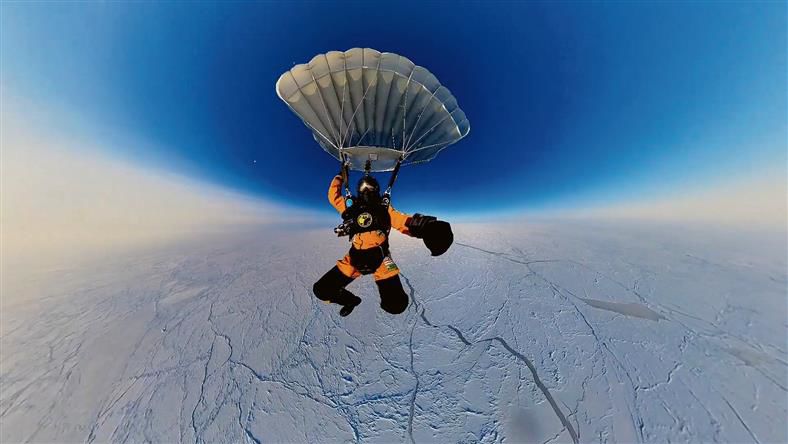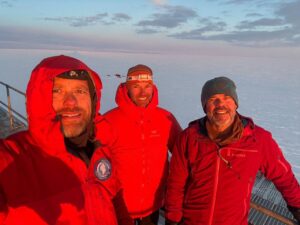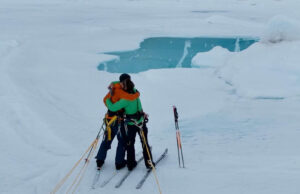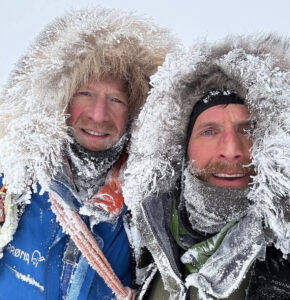The Barneo ice camp near the North Pole may have been canceled, but three Russians managed to parachute from the stratosphere and land on the sea ice nearby.
The trio parachuted from the stratosphere, which begins about eight kilometers above the surface. They completed the high-altitude jump from 10,500m on April 12 to coincide with the anniversary of Yuri Gagarin’s first human space flight.
Mikhail Korniyenko, Denis Efremov, and Alexander Lynnik threw themselves out of the Ilyushin-76 plane. They fell for around two-and-a-half frigid minutes before opening their parachutes. They glided the final 1,000m to the ice below, landing near the Barneo camp.
In freefall, they traveled at over 300kph. Meaning that the already cold, -50˚C air felt more like -70˚C. To combat the incredible cold, all three wore heated masks. Despite this, all now have frostbitten cheeks.
An experienced trio
Lynnik and Korniyenko came up with the idea for the jump. Lynnik is a space technology engineer, while Korniyenko is a cosmonaut who has been on several missions to the International Space Station. Efremov, who works in stratospheric flights, joined the team later.
The three men underwent tests in heat and pressure chambers to prepare for the jump. They even carried out a test jump from 6,000m. They decided against using spacesuits because of the lack of maneuverability. Instead, they wore overalls, goggles, heated gloves, and a heated oxygen mask.
The hour before the jump, they breathed pure oxygen to get all the nitrogen out of their blood, to avoid decompression issues during freefall.
For the Russians, this was not just an attempt to set a world record. They were testing a new communication system.

The Barneo polar station. Photo: Alexey Cherkasov/RGS
Testing a cheaper version of Iridium
Before the jump, the communication equipment was parachuted onto the ice from a lower altitude. After landing in Borneo, they used diesel generators to establish a satellite connection.
Speaking to Reuters, organizer Nikita Tsaplin said, “Of course, our solution is a prototype…It’s not Iridium just yet.”
The low-cost satellite was launched in June 2023 and flies over the North Pole every half an hour. Now that Kornienko, Efremov, and Lennik have established a connection between the satellite and the server in Barneo, the experiment will continue for the next month.
While the ice floe was not large enough to accommodate the many tourists who wanted to fly to Barneo, the research group will presumably leave on a small plane that needs a shorter ice floe on which to land.






